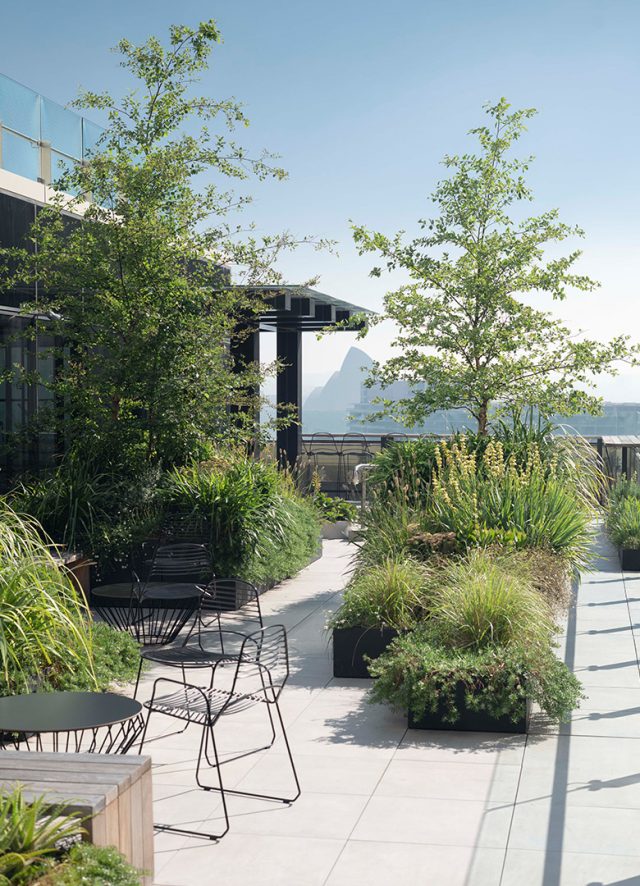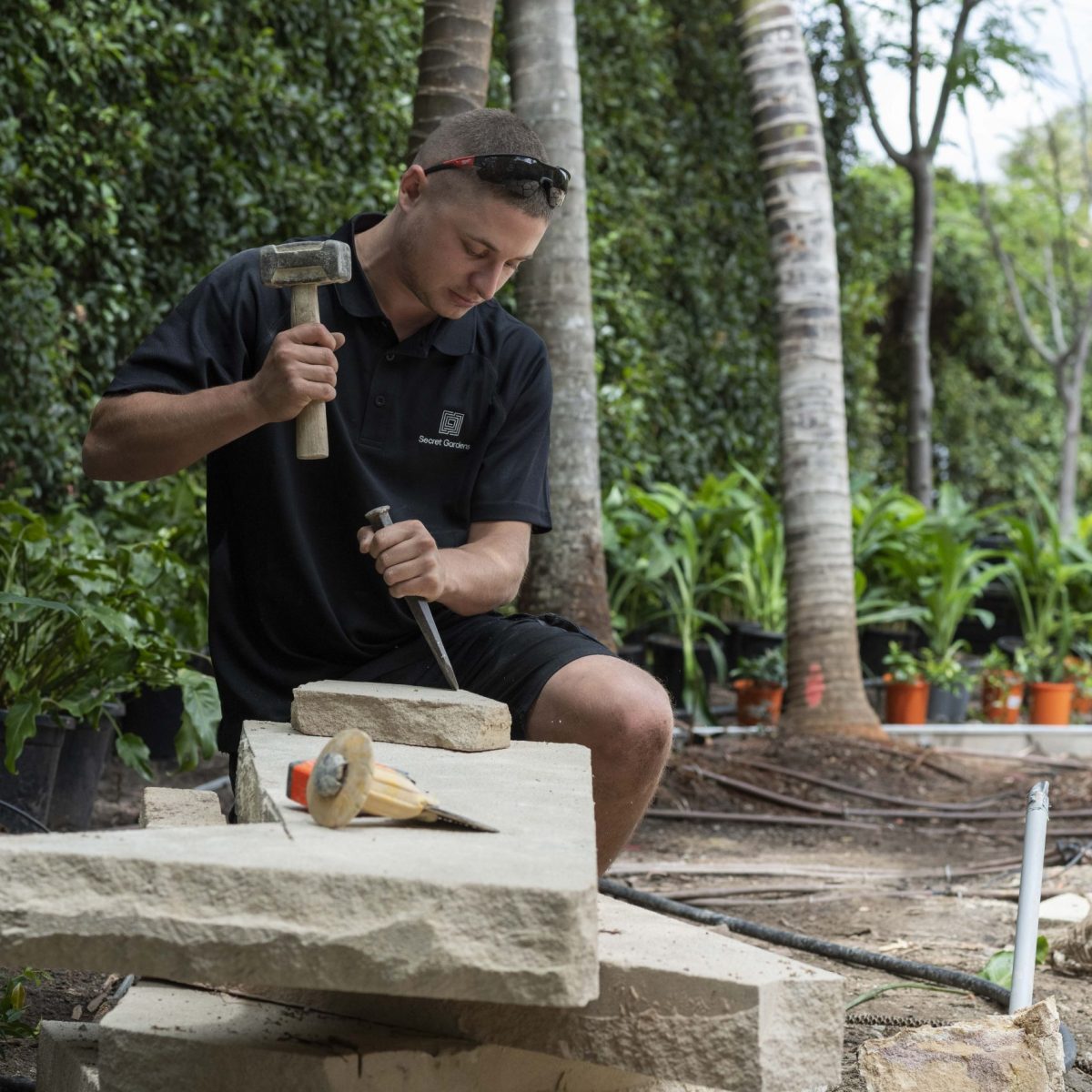Creative director at Secret Gardens, Matt Cantwell, says clients are beginning to understand the value a well-placed, carefully crafted rooftop garden can offer.
“We are definitely seeing them more often,” he says. “If you look at Google Earth 10 years ago and then now, you will see a significant difference looking across the rooftops, particularly in areas where we work which are often densely populated.

“People are maximising the footprint of their site.”
While rooftop gardens often provide a beautiful, green alternative to unsightly aircon equipment perched outside a window or a reflective steel roof, they do serve some very practical purposes as well.
“A green roof provides insulation, soundproofing within the building as well as air cleansing qualities. It also promotes district views. You might be able to see the trees in the distance but when you have roof space in your view, it can be hard to connect them visually. If you can simplify that, it links you to the next garden.”
Although it’s possible to retrofit a rooftop garden to an existing building, Matt says it’s a simpler proposition to consider it as part of a wider building project, where engineering for the weight of the roof garden and issues like waterproofing can be considered. Planning for it from the start also allows for better consideration of sight lines and even access to the roof. While rooftop gardens are often installed solely to be viewed from elsewhere, Matt says there are exceptions.

“We definitely do rooftops where entertaining is involved and we are achieving accessibility but that is probably when there is a significant view to be captured or because entertaining at ground level is somehow compromised,” he says. “Sometimes those spaces are so hot, windy and hostile they will only be used infrequently. It’s about making sure we are always maintaining that balance between the green element and the built form.”
Where entertaining is not the primary purpose, it can still be important to access the rooftop garden, even if it’s just to do some weeding. Some rooftops also receive a lot of sunshine, making them a prime location for a kitchen garden.
“When you are designing a roof garden you need to think ‘how am I going to get there safely?’,” says Matt. “Sometimes that means putting harness points on the roof and designing a plant palette that is going to require infrequent maintenance – just a few times a year. Often it’s a sunny spot which is great for growing veg but it’s also about convenience.”

Most often though, rooftop gardens are about the optics. Matt says they are particularly effective when designed for garages or studios at the far end of the garden, where they can form part of the view from upper levels of the house. With the right planting choices, such as long grasses to obscure parts of the roof, or trailing plants to soften the edge of garage entrances below, they can add a significant green element, connecting the viewer to the natural world.
Aside from maintenance issues, Matt says well chosen plants will provide seasonal change, as well as weather updates, all from the comfort of your internal space.
“It’s a different way of interacting with the view,” he says. “If you have grasses on the roof, you know what’s happening with the day. It tells you about the sun and the wind or whether it’s raining.
“It’s an exciting way to start the day.”
- If your architectural plans include extending upwards, consider the views from above. You may enjoy district views but what you can see in the foreground also matters.
- Choosing plants such as tall grasses for rooftop spaces will create a sense of movement, providing a connection to daily weather conditions.
- Depending on sight lines, you may not need to plant out the whole roof space. Well-positioned taller plants can give the impression of a green wall.
- Access and maintenance are always a challenge with roof gardens. Choose plants and materials wisely.



